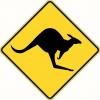
Originally Posted by
Rafael Herrera

wouldn't the second pass leave its own tracks behind? The last pass would leave a track, wouldn't it?
There seems to be some confusion here.
For smoothing my planes are usually set to take a shaving of ~0.001" give or take a few ten thousandths. This usually doesn't leave a track.
If the plane is leaving tracks start the first pass with the blade slightly beyond the edge of the piece being worked. With the lateral set to take an even shaving a little overlap on the first pass should remove the track without leaving a new one on that side. Repeat this until the edge of the work piece is slightly overlapped by the blade on the close side.
This is only for tracks left at the edge of the blade. A nick in the blade will leave a track that is best removed by sharpening the blade to remove any nicks.
To sum up:
One can camber a blade to eliminate tracks. The cambering can be extremely light for light shavings. For thicker shavings more cambering is needed.
One can overlap passes to remove a track left on the previous pass. (kind of like covering your tracks?)
For some reason that probably isn't a phenomena occurring only in my shop, a square edge, sharp blade and a light shaving seems to work fine at avoiding tracks.
jtk
"A pessimist sees the difficulty in every opportunity; an optimist sees the opportunity in every difficulty."
- Sir Winston Churchill (1874-1965)






 Reply With Quote
Reply With Quote



